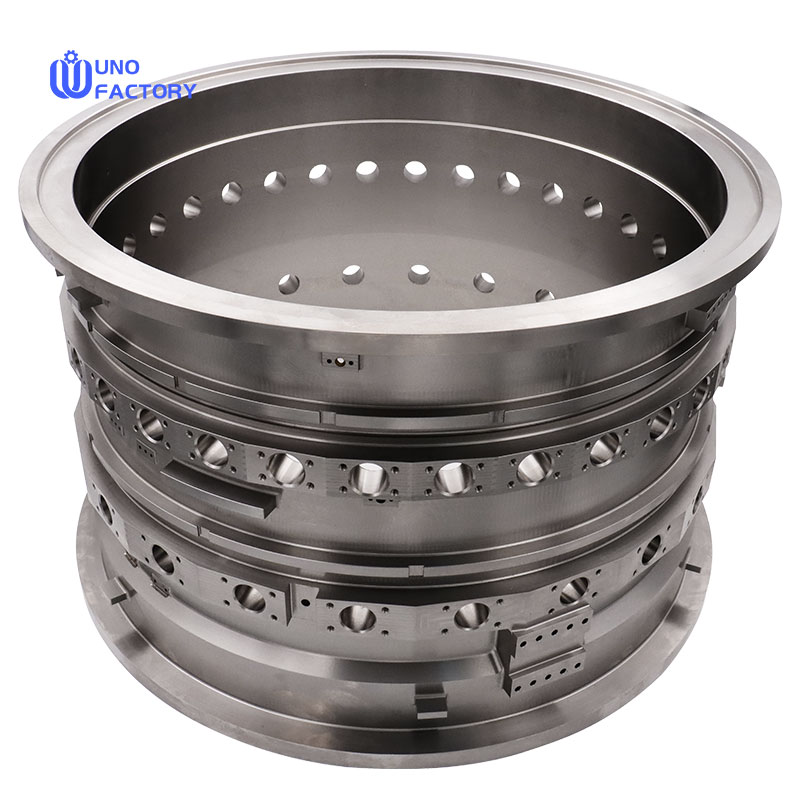Time to read: 6 min

The precision of fit between mechanical components is critical for product functionality. This article explores the various types of fits used in mechanical engineering, offering insights into selecting the appropriate fit for your design requirements and ensuring optimal performance.
In the assembly of engineered products, the way components fit together is crucial for their intended functions. Achieving the correct fit is essential for ensuring that parts either slide over one another or press firmly against each other. This article explores various types of fits and how to choose the right one for your product design.
What is a Fit?
In mechanical engineering, a fit refers to the dimensional relationship between components that must be either loose or tight to function correctly. Understanding fits involves knowing key terms such as hole and shaft basis systems, fits, and tolerances.
The Hole and Shaft Basis System
Fits are categorized as either shaft-based or hole-based. The hole is an internal feature, while the shaft is an external feature. In hole-basis systems, the hole size remains constant, and the shaft size varies to achieve the desired fit. Conversely, in shaft-basis systems, the shaft size is fixed, and the hole size is adjusted.
Fits and Tolerances
Tolerances work hand-in-hand with fits to ensure that components assemble correctly. Tolerance is the difference between the maximum and minimum size limits and is represented by a positive numerical value.
Naming Fit Types
The International Organization for Standardization (ISO) uses an alphanumeric code to name fits, which includes a letter for the hole or shaft and a number to denote the fit's tolerance.
Types of Fits
Different fit types in mechanical engineering serve various purposes, and ISO recognizes three primary types used in manufacturing.
Clearance Fits
Clearance fits are designed for loose mating where components need to move freely. They are divided into five categories based on how loose they are:
- Loose Running Fit: For areas where accuracy is unimportant.
- Free Running Fit: For situations requiring component movement with little concern for accuracy.
- Close Running Fit: For situations requiring minimal clearance and some accuracy.
- Sliding Fit: For high accuracy and minimal clearance.
- Locational Clearance Fit: For high accuracy but only minimal clearance.
Interference Fits
Interference fits, also known as press or friction fits, fasten two components by pushing them together. They are categorized into three types:
- Press Fit: Minimal interference, assembled by cold pressing.
- Driving Fit: More prominent interference, requires higher assembly force for cold pressing.
- Forced Fit: Assembling components requires heating the hole part and freezing the shaft.
Transition Fits
Transition fits fall between clearance and interference fits and are ideal for situations requiring high precision. They are also known as slip or push-fits and provide either clearance or interference depending on the situation.
How to Choose Suitable Fit for Your Projects
Selecting the appropriate fit type depends on several factors:
Application
Different fit types are suitable for different applications. Consider the properties of each fit type and the function of your product when choosing the right fit.
Budget
Tight tolerance fits can be more expensive than standard fits. Carefully weigh your options to find a fit that meets your product's requirements without exceeding your budget.
Tolerance
Understanding the tolerance of a product is crucial for selecting the right fit. Be specific about your requirements and consider the total tolerance slack, which is the combined maximum or minimum tolerance of different parts.
Conclusion
Understanding different fit types in mechanical engineering is essential for applying them effectively in various mechanical applications. This article provides a comprehensive understanding of fits and guidance on choosing the right fit for your projects. Knowing how to apply fits correctly is crucial for product quality and performance.
For expert guidance and precision manufacturing services, Unofactory is here to help. With our engineering support, you can enhance your product's quality and stand out from the competition.
FAQ:
What are fits?
Fits describe the dimensional relationship between components and determine whether they are loose or tight, which is essential for design guides.
What are the different types of fits?
According to ISO, the different types of fits in mechanical engineering are clearance fit, transition fit, and interference fit.




